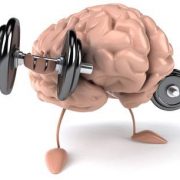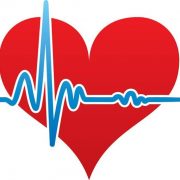Heart disease is so common nowadays that the USA has dedicated an entire month to it, the month of February.
Heart disease is so common nowadays that the USA has dedicated an entire month to it, the month of February. The aim of the Center for Disease Control and Prevention is to prevent a million heart attacks and strokes in the US by 2017.
Commonly, medication is prescribed to lower blood pressure. In some cases, patients report side effects. In the worst of cases, these side effects are so bad that patients discontinue treatment.
If in 10% of the cases, patients that have high blood pressure suffer because it is secondary to another health issue, in 90% of the cases, people suffer from what is called primary hypertension. In these cases, it is the hypertension that causes health ailments.
Classically, the usual suspects of primary hypertension have been lifestyle factors, such as too much salt, lack of exercise, obesity or heavy alcohol consumption.
What about the brain?
According to the American Academy of Neurological and Orthopedic Surgeons (AANOS), hypertension “is not only a problem of the heart, kidneys or blood vessels but also of the central nervous system”.
Professor Paton speaks of neurogenic hypertension, that is, it is brought on by stress that revs up the nervous system as a whole. If stress becomes chronic, it can have consequences on blood pressure, long term.
If it’s true that the kidneys regulate the balance of salts and fluids, which has a direct effect on blood pressure, if they lack blood, it is the brain that is called upon for provisions. Hypertension can then paradoxically occur because, at this point, it is the brain that will be short of blood.
When blood flow to the brain decreases, the brain sends out instructions to the body to constrict blood vessels, boosting the blood supply to the brain. Sadly, this results in high blood pressure.
If it’s possible to increase brain activity and, therefore, contribute to its irrigation via stimulation, the brain can be better equipped for all demands and, therefore, it is fair to think that creating this type of leverage for improved brain function can have an impact on blood pressure, per se.
Posturology, by improving sensory input to the brain, from morning to night, day after day, can be a great way to stimulate the brain and keep it active and high performing!
Moral of the story: when imbalanced structurally, brain activity is not optimal and, therefore, the brain can potentially be less efficient at managing issues such as blood pressure.
Posturology can help!



